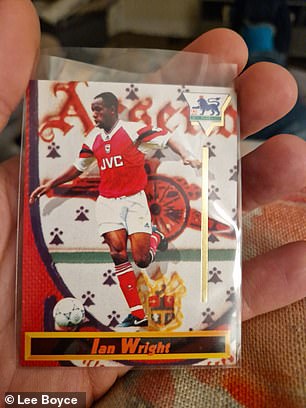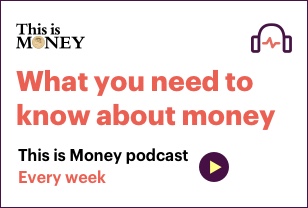Trading cards have become big business, says LEE BOYCE – here’s why…
‘Would you like £2,600 for it?’ That was the plea of a woman I stood next to this weekend, looking for the item of her dreams.
No luxury handbag, no diamond ring, no ULED television the size of an entire wall.
No, a Weiss Schwarz Disney trading card that she had wanted to buy for “many months.”
I attended the Essex Card Show III at the Brentwood Center in a personal capacity. My 9-year-old nephew Harrison (and 40-year-old brother-in-law Elliott) have been getting into Pokémon cards in a big way over the past 18 months.
They invited me to the show and I was blown away by the sheer size, popularity and mixed crowd in attendance.
Big business: Thousands of buyers frantically searched through trading cards at the Essex Card Show III
I had imagined nerdy men in tight-fitting Pikachu T-shirts, but it didn’t look like that. At one point I found myself standing next to a well-dressed lady in her thirties, deep in conversation about the nuances of baseball cards with a few booth owners.
She pulled out a shiny card from a Fort Knox type box, which she opened with a combination lock to show to the stall owners, and they stared at it in awe.
“That’s one of the best cards I’ve ever seen,” one of them mused. ‘I couldn’t even put a price on it. It’s unique.’
Trading cards have seemingly become big business in recent years. It’s probably driven by people like Harrison and Elliott, combinations of parents and children, who find common ground in a physical asset that they can ultimately bond over.
For adults, it’s a way to hark back to the nostalgia of youth and a way to invest… but invest in something tangible. A better way to spend their hard-earned money on their children, instead of on disposable toys.
For kids, it’s the brilliantly crafted maps, the characters and colors, and a way to collect off-screen. Harrison and Elliott built a cupboard at home that now houses all their favorite cards and Pokémon nick-nacks. It looks great.
The card show had about 50 booths, most of which sold Pokémon, but there were also sports cards, Disney cards, Yu-Gi-Ho! cards and everything in between.
Although I don’t collect trading cards (retro video games are my collecting poison of choice), I still got carried away enough to go into full resale mode, trying to sniff out our bargains in the vast number of binders in the hopes of striking gold.
I bought a 1993 Merlin Ian Wright Arsenal card for £1 – the reason for this was: I love Ian Wright, I love Arsenal, I went to my first Gunners match at Highbury with my brother in 1993, and the card looked great.
When I got home I looked it up on eBay and it turns out it was one of only 5,000 made, and regularly sells for £20. A nice bonus for a card that I just like.
I bought some cool looking Pikachu cards, as well as a special card of one of my favorite basketball players – Dirk Nowitzki – from his final season in the NBA.
That card is extra thick and contains a small piece of a game-worn shirt. I’ll be honest, I think it’s cool and for £10, something I’ll keep. I don’t care if it’s worth more or less, or if it will grow in value, I just like the card.
And for the price of a pint and a half in London I can own and admire it forever.
It is difficult to determine an exact value of the trading card industry. Companies like Pokémon, Mattel, Topps and Konami pump out billions of them every year.
But serious collectors are looking for the Holy Grail cards – and you only have to hop onto social media to be bombarded with ‘pull videos’.

It felt good: I bought this Ian Wright card for £1 – a quick search on eBay suggests it could be worth £20 (but I don’t care)
Granted, that sounds dodgy, but essentially they’re videos of people buying packs of cards and opening them, hoping to find a rare copy worth hundreds – or even thousands of pounds.
Most of the stalls at the Essex Card Show had a mix of binders containing cards worth a few pounds, alongside locked display cabinets containing cards worth up to £5,000.
That’s right, £5,000 for a card typically 2.5 inches by 3.5 inches. The rare cards are usually graded – and a PSA 10 (the highest grade) is essential for top prizes.
Meanwhile, I saw an unopened Pokémon booster box from 1999, in mint condition, for sale for £15,000. That’s half a house deposit.
Our writer Sam Barker took a fascinating dive into Pokémon and collecting last year.
And while there’s a lot of attention on Bitcoin right now, trading cards are clearly big business – and a bigger business than I ever really realized before attending this show.
Trading cards are seemingly the stamps of our generation (my father, like many others, I suspect, was a big stamp collector. I never really knew why).
I didn’t stick around to see if the buyer managed to negotiate that PSA 10 Steamboat Willie card down to ‘just’ £2,600, but she seemed to be on a steamboat-like mission to finally get that card in her possession.
Do you love trading cards and want your collection to be appreciated? Contact Modern Treasures in the subject line: editor@thisismoney.co.uk
Some links in this article may be affiliate links. If you click on it, we may earn a small commission. That helps us fund This Is Money and keep it free to use. We do not write articles to promote products. We do not allow a commercial relationship to compromise our editorial independence.


